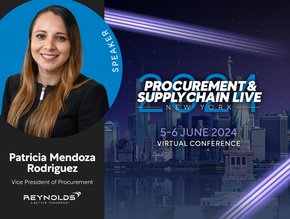Menlo Security: shielding business in the cloud

Mike East is an IT veteran who jokes that at some point over the past 30 years he’s held every job in the sector, barring marketing (though being married to a marketeer, he feels he can tick that box, too). As Vice President EMEA at Menlo Security, he now leverages his considerable experience of the full IT ecosystem to steer businesses through the crucial security aspects of their digital transformation.
Menlo Security specialists work with companies to overcome common security sticking points and dispel misconceptions associated with the safety of cloud computing, which Mike “always felt was a mindset issue and not a technology issue.”
Menlo’s solution is clear and concise: “Menlo was born in the cloud and provides users with a 100% safe email and browsing experience by moving the fetch and execute functions of web browsing away from the network and back into the Menlo cloud.”
Web browsing and electronic documents are isolated on Menlo’s cloud, instantly tested for malicious content, before being rendered and returned safely to users’ devices. During a pandemic situation, such capabilities enable organisations to secure employee activity outside the confines of the corporate network, which in turn brings enormous value. By sidestepping the need for a VPN, businesses also often save money and can offer their employees a more seamless experience.
To power its own digital transformation and support hundreds of employees working from home, law firm Howard Kennedy’s Head of Technology and Security, Jonathan Freedman, sought out Menlo.
“Jonathan was looking to isolate documents and protect their users from weaponised attachments,” East says. “Now when lawyers click on that document, essentially the execution of that document is happening in the Menlo cloud. If it's malicious, what we send back is a rendered view, which is completely harmless, on the user device. If it’s completely harmless, that also gets rendered back on the user's device.”
East’s view is that collaboration is key - working in harmony with partners “whether you're buying a car, or whether you're buying software as a service.”
“Howard Kennedy as a company was very easy to work with and understood exactly what it wanted and needed. That's actually a rare thing in my experience,” he says. “Its process for evaluating and testing was very detailed and very thorough, and if someone knows what they want it’s much easier to make that journey together.”
As industries accelerate their digital transformation, East says “the convergence of software defined networks and security is only going to accelerate. This is not just because of COVID - it was going that way anyway - but COVID has been a bit of a wake up call for organisations on how they should organise themselves.”
East says the Menlo team will be standing by: “Organisations should spend more time doing what they do, not building infrastructure to support what they do.”






